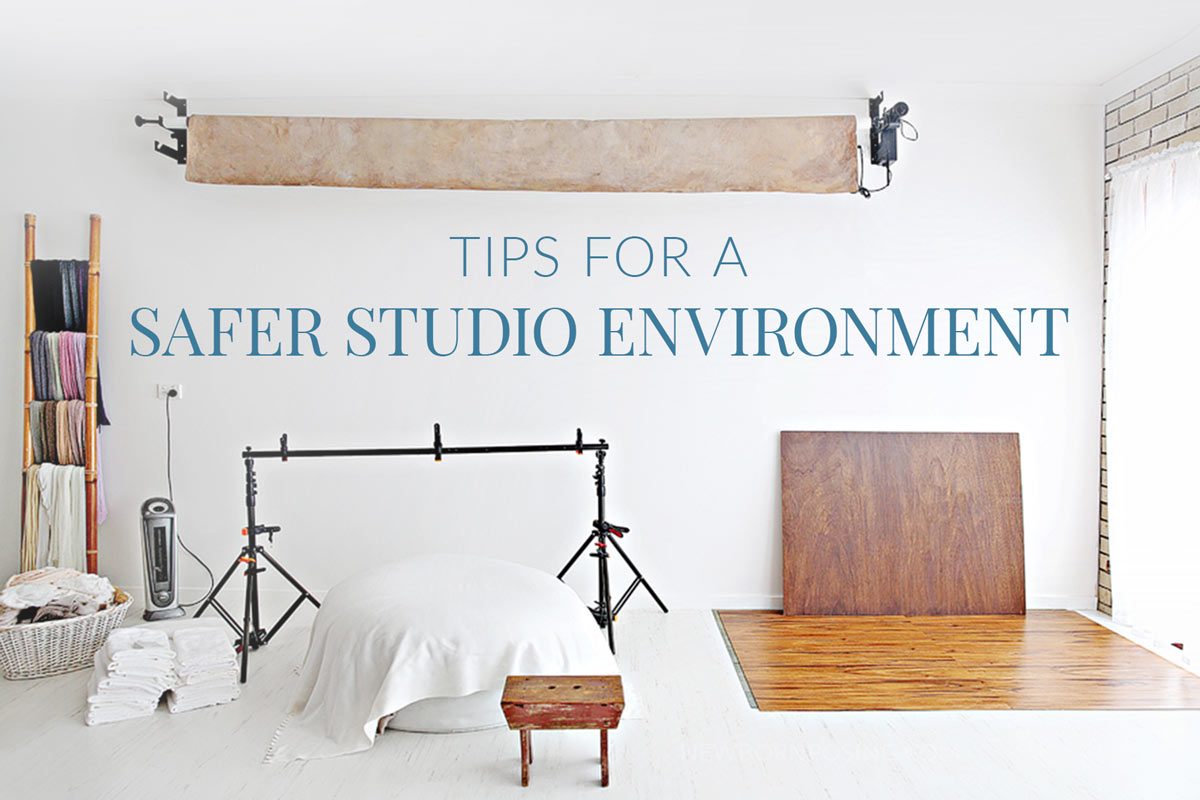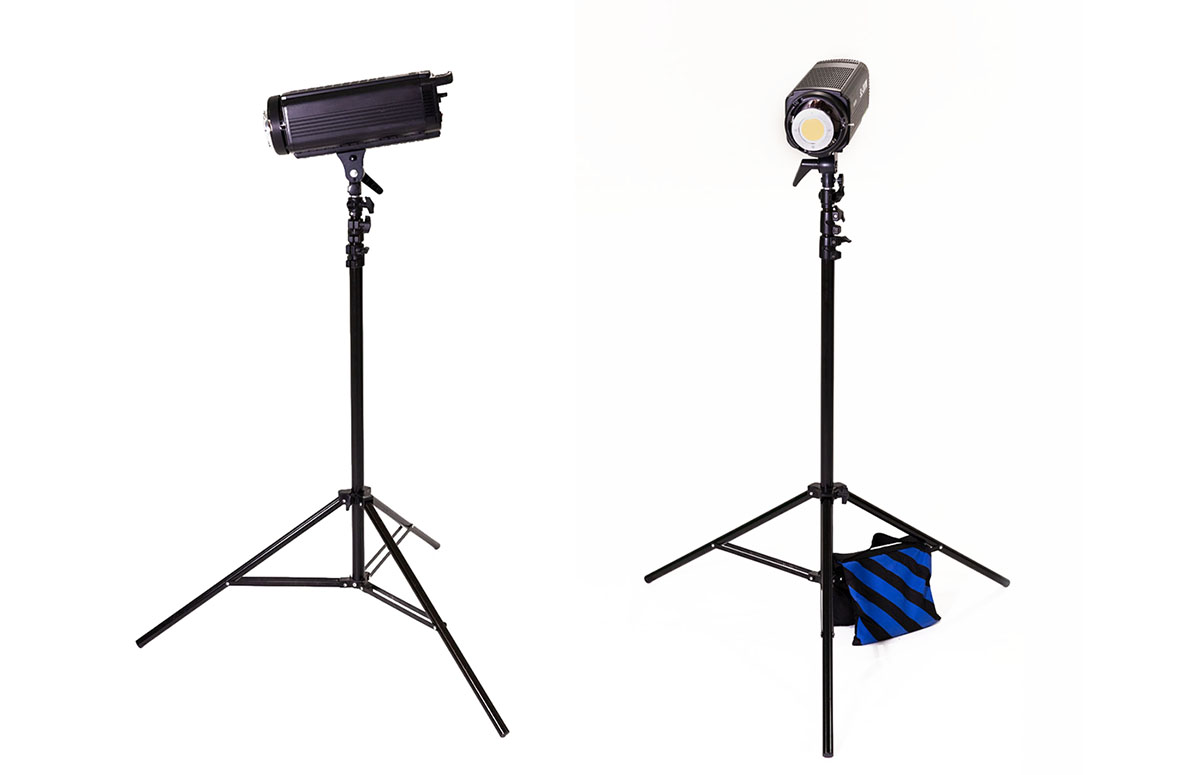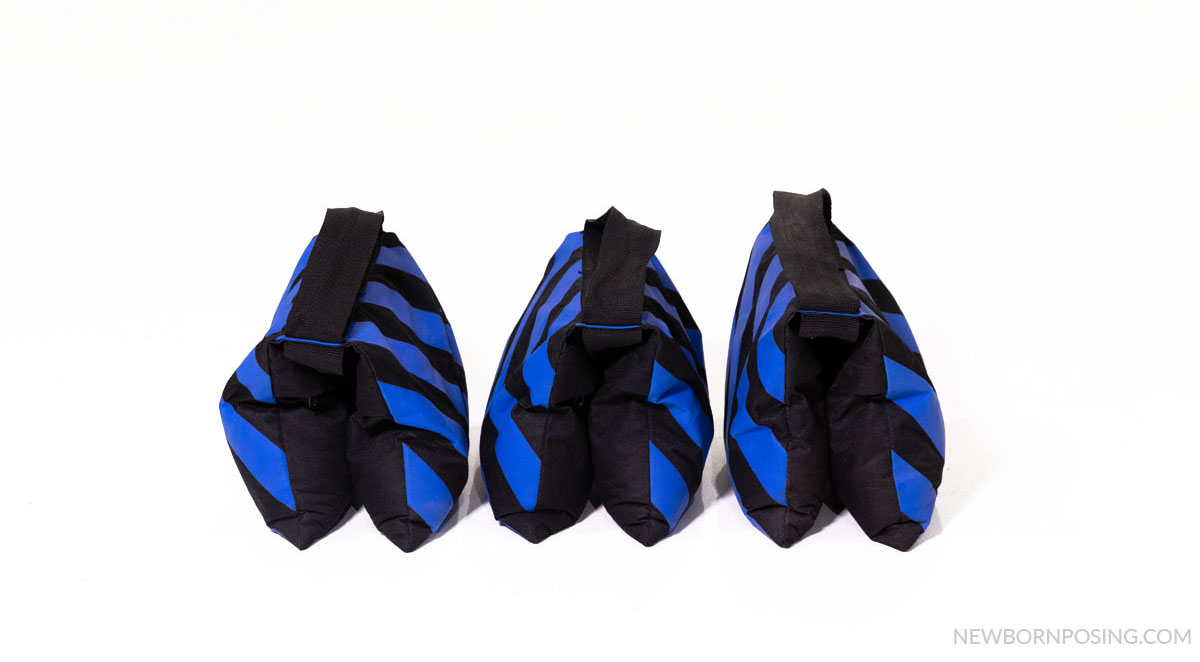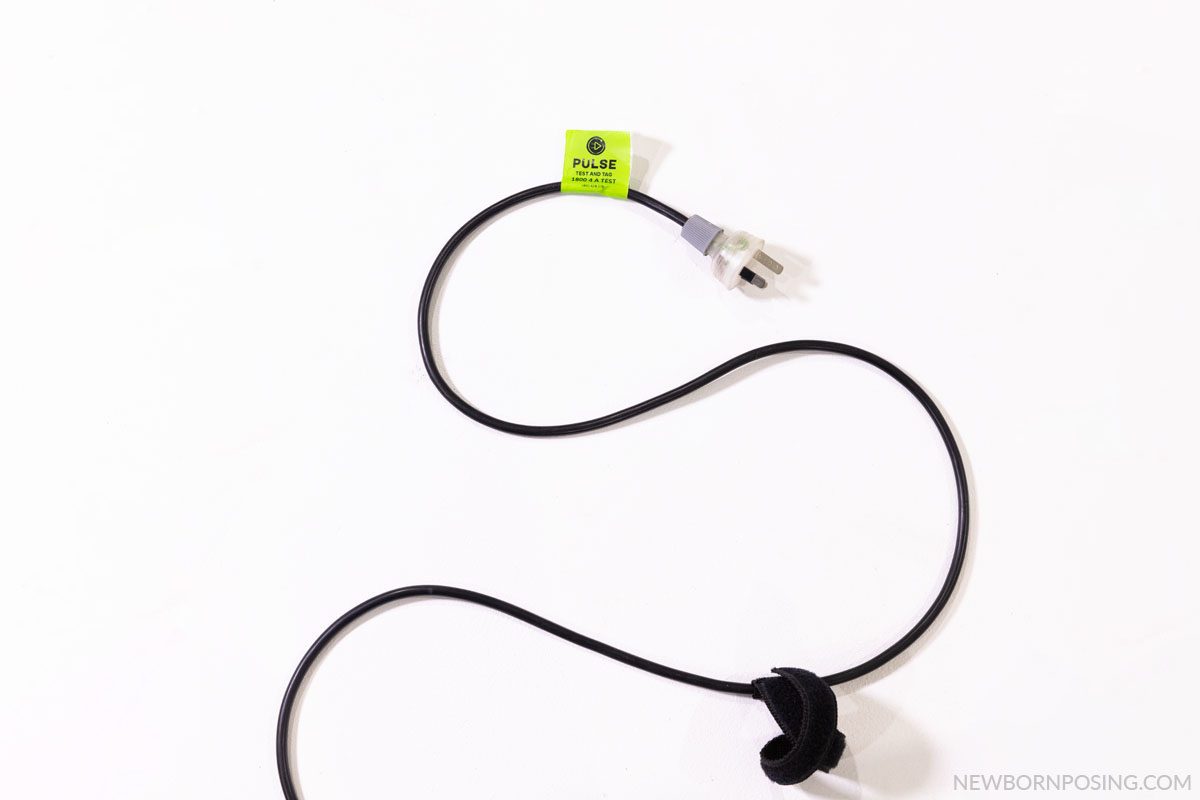Ensuring a safe studio and workspace environment is a key responsibility of photographers. This involves maintaining equipment and reducing risk wherever possible. Don’t forget that safety practices are essential both in studio and on location.
While this is by no means a comprehensive list of safety practices, we hope these points will prompt you to put procedures in place to ensure the health and safety of those who enter your studio, or are at an outdoor location with you. With stands and cables, your workspace is full of potential hazards, so we must prioritise safety.
LIGHT AND BACKDROP STANDS
Choosing Stands for Photography
Stands for lights and backdrops range from lightweight to heavy-duty. Always choose a stand which is most appropriate for the weight and size of the item it needs to support. Cheaper lightweight stands might be okay for small items such as Speedlight flashes and simple umbrellas. However, it’s best to invest in heavier, sturdy stands to support larger flash heads, particularly when they are paired with large, weighty modifiers. (eg. a large soft box).
When choosing stands to support a background system, consider the weight of the background material itself. Vinyl and painted canvases are generally quite heavy. These will likely require sturdy crossbars and stands. However, if you’re using lighter fabrics and throws which will sit low to the ground, for example, over a posing bag, lighter stands, as long as they are well stabilised, will usually suffice.

You might also consider a wall-mounted backdrop system. Such systems will reduce the number of trip hazards if fewer stands are required.
Setting Photography Stands for safety
Experiment with the width of the legs of your stands to find the point at which it has maximum stability. For many stands, this will be where the legs create the broadest footprint, however, this can vary. This is especially important when working with heavy lights and large modifiers.
Additionally, angling your flash head to fall in line with one of the legs of the stand will create greater stability than aligning the head over the space between 2 legs.

If using booms or C-stands, tie a flag (or poke a tennis ball) to the empty end, to avoid people running into them.
SANDBAGS & SHOT BAGS
Sandbags and shot bags are weighted bags, filled with sand and metal, respectively. You can never have too many weights in your kit. Along with gaffer tape, they’re an inexpensive safety essential. It’s a good rule to add a weights to your stands. Place them in a manner which logically helps counterweight your light/modifier or backdrop, both in-studio and on location.

SAFETY TIPS FOR USING LIGHTS
REMEMBER that LIGHT GENERATES HEAT.
ALWAYS ensure lamp covers are removed from flash heads before turning on. The black plastic covers are for protection only. They will begin to melt once the light is turned on and begins to heat up.
NEVER place flammable materials near lights. This includes placing lights too close to walls, ceilings, flags and backdrops. Also check that softbox diffusers aren’t touching the lamps.
NEVER leave lights on and unattended.
Most monohead studio flashes contain an internal fan for cooling. Ensure the cooling vents are not covered or blocked by your light modifier (umbrella/softbox) or other objects.
ALLOW LIGHTS TO COOL before packing them down or attempting to touch them.
ALWAYS consult a LICENSED ELECTRICIAN if you have concerns about the safety of your lights or any other electrical equipment.
Consult your local fire service or workplace health & safety office on an appropriate fire extinguisher/s for your space.
ELECTRICAL CABLES
If running long cables on the ground, tape them down to avoid tripping hazards. If in a high traffic area, don’t just tape over the cable, but create a large cross over the cable to alert people to the potential hazard.
While not as relevant with some newer lights, it’s still good practice to discharge lights and turn the power off before swapping power cables. Lights are high powered electric devices which have the potential to electrocute or cause damage to the device itself.
NEVER roll cables around your elbow. Instead, use the “Under Over” method for coiling cables. Electrical and data cables are sensitive, so treat them with care to avoid damage.
Have an electrician check your cables and equipment regularly. You’ll often need to “test and tag” (a licensed electrician’s approval) equipment when working in commercial spaces.

LIQUIDS
It sounds like common sense, but it’s not uncommon for studios to have a (signed) no liquids rule in place.
In addition to slipping and electrocution risk, also take into account whether you permit hot drinks in your studio, based on your clients. You might also implement a “drink bottles only” rule, in preference to cups/glasses which spill or break more easily. Again, these are points for your consideration based on knowing your own studio layout and your clients.
GENERAL
Check your equipment regularly. Organise any repairs or servicing as required.
Check with a licensed electrician in your area to confirm how frequently you’re required to have your electrical equipment tested. In Australia, Queenslanders can refer to the Worksafe Test & Tag page. Search online to find the recommendations and regulations in your region.
Check your space regularly to identify any hazards.
Have an easily accessible First Aid kit and CPR chart, along with emergency numbers.
Have appropriate insurances in place per the requirements of your state/territory and country. Consult a professional in your area.
YOUR THOUGHTS?
Do you have a safety recommendation of your own? Let us know in the comments.
WANT NEWBORN PHOTOGRAPHY SAFETY TIPS?
For Newborn Photography Safety, see Kelly’s free Safety Tips Videos.



Jasmin says
Great tips. I’d also add to make sure you also have a fire extinguisher, blanket, first aid kit and CPR chart easily accessible.
Depending on the size of the studio, a regular walk around safety check/ audit is also good to make sure you are aware of any dangers that could be on the horizon.
Michelle K says
Fantastic additions, thanks Jasmin!